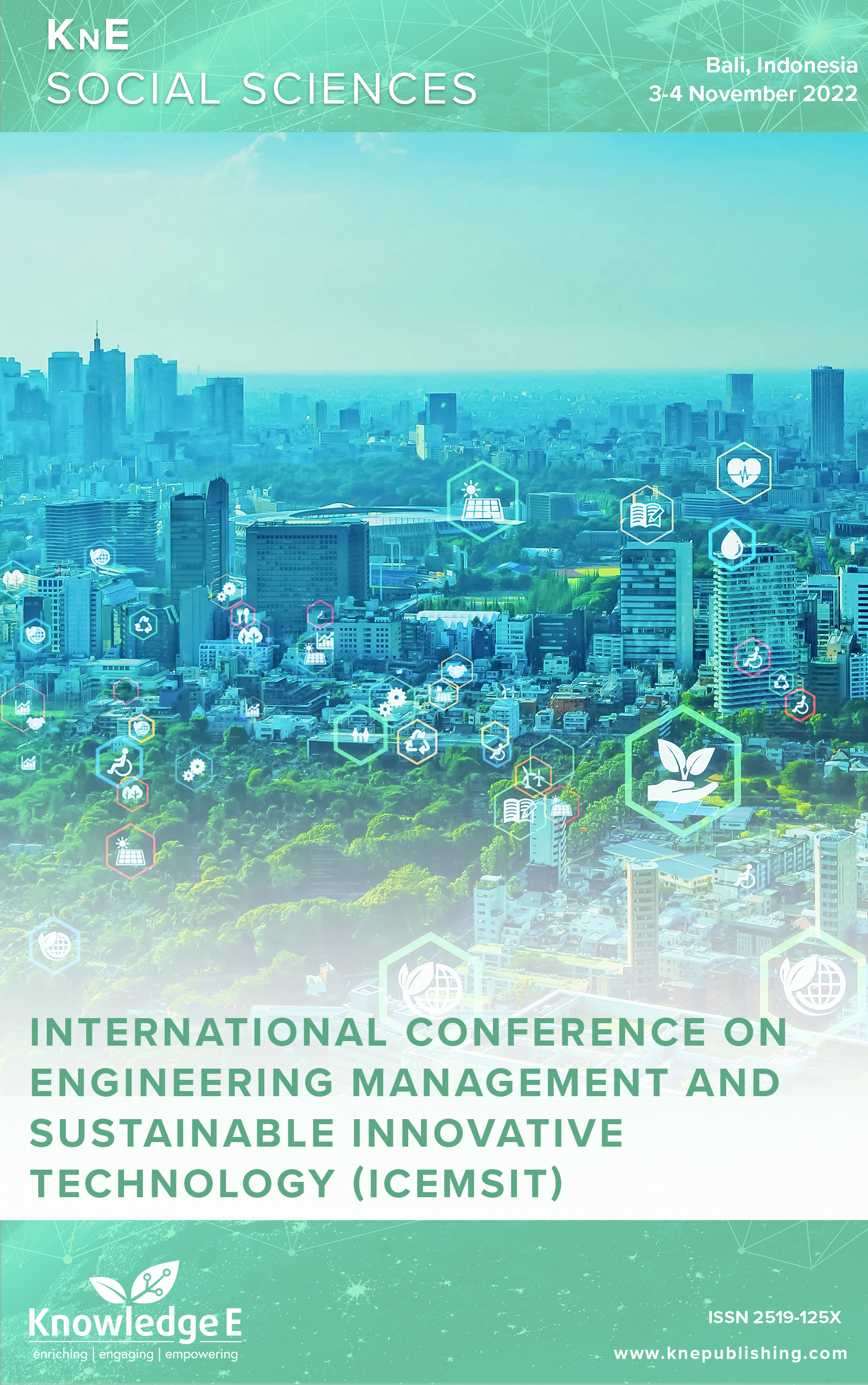The Power of Social Media for Marketing Activities to Boost Brand Love of Local Products
DOI:
https://doi.org/10.18502/kss.v9i10.15715Abstract
It has become increasingly difficult for local brands to compete with global brands, as most foreign brands are perceived as better than local brands. As such, local companies were highly suggested to change their public perception through appropriate marketing communications. Social media for business purposes can be optimized through social media marketing activities (SMMA) to shape positive customer attitudes and behaviors. This study aimed to examine the influence of SMMA on customer love for local brands and the effect of SMMA on increasing brand awareness and image as two essential antecedents for creating brand love. This research design used a survey and involved 200 customers and social media visitors of local brands. Data was analyzed using the WarpPLS software. The findings showed that SMMA could increase customer love for local brands through brand awareness and brand image. Research also found that SMMA can directly influence brand love. The influence of SMMA on brand awareness was more powerful than brand image. From a customer perception perspective, brand awareness and brand image were important conditions for strengthening brand love. The implication of this research is that local product companies should design and manage their marketing activities in social media based on the important criteria from the customer’s perspective.
Keywords: social media marketing activities, brand awareness, brand image, brand love, local product
References
Poulis A, Rizomyliotis I, Konstantoulaki K. Do firms still need to be social? Firm generated content in social media. Inf Technol People. 2019;32(2):387–404.
Suryani T, Fauzi AA, Nurhadi M. SOME-Q: A Model Development and Testing for Assessing the Consumers’ Perception of Social Media Quality of Small Medium- Sized Enterprises (SMEs). J Relationsh Mark. 2020:1–29. DOI: https://doi.org/10.1080/15332667.2020.1717277
Ibrahim B, Aljarah A, Ababneh B. Do Social Media Marketing Activities Enhance Consumer Perception of Brands? A Meta-Analytic Examination. J Promot Manage. 2020;26(4):544–68. DOI: https://doi.org/10.1080/10496491.2020.1719956
Fetais AH, Algharabat RS, Aljafari A, Rana NP. Do Social Media Marketing Activities Improve Brand Loyalty? An Empirical Study on Luxury Fashion Brands. Inf Syst Front. 2022. https://doi.org/10.1007/s10796-022-10264-7. DOI: https://doi.org/10.1007/s10796-022-10264-7
Ibrahim B, Aljarah A, Sawaftah D. Linking social media marketing activities to revisit intention through brand trust and brand loyalty on the coffee shop facebook pages: exploring sequential mediation mechanism. Sustainability (Basel). 2021;13(4):2277. DOI: https://doi.org/10.3390/su13042277
Godey B, Manthiou A, Pederzoli D, Rokka J, Aiello G, Donvito R, et al. Social media marketing efforts of luxury brands: influence on brand equity and consumer behavior. J Bus Res. 2016;69(12):5833–41. DOI: https://doi.org/10.1016/j.jbusres.2016.04.181
Kim AJ, Ko E. Do social media marketing activities enhance customer equity? An empirical study of luxury fashion brand ?. J Bus Res. 2012;65(10):1480–6. DOI: https://doi.org/10.1016/j.jbusres.2011.10.014
Hutter K, Hautz J, Dennhardt S, Füller J. The impact of user interactions in social media on brand awareness and purchase intention : the case of MINI on Facebook. J Prod Brand Manage. 2013;22(5/6):342–51. DOI: https://doi.org/10.1108/JPBM-05-2013-0299
Suryani T. Relational benefits analysis of credit-delivering services for Small and Medium Enterprises in Indonesia. IAMURE International Journal of Business and Management. 2014;9(1):46–58. DOI: https://doi.org/10.7718/iamure.ijbm.v9i1.823
Chierici R, Del Bosco B, Mazzucchelli A, Chiacchierini C. Enhancing Brand Awareness, Reputation and Loyalty: The Role of Social Media. Int J Bus Manage. 2018;14(1):216. DOI: https://doi.org/10.5539/ijbm.v14n1p216
Suryani T. Perilaku Konsumen di Era Internet. Pertama. Yogyakarta: Graha Ilmu; 2013.
Barreda AA, Bilgihan A, Nusair K, Okumus F. Online branding: development of hotel branding through interactivity theory. Tour Manage. 2016;57:180–92. DOI: https://doi.org/10.1016/j.tourman.2016.06.007
Zhang Y. The impact of brand image on consumer behavior: a literature review. Open Journal of Business and Management. 2015;03(1):58–62. DOI: https://doi.org/10.4236/ojbm.2015.31006
Rahman R, Langner T, Temme D. Brand love: conceptual and empirical investigation of a holistic causal model. J Brand Manag. 2021;28(6):609–42. DOI: https://doi.org/10.1057/s41262-021-00237-7
Aaker DA. The value of brand equity. J Bus Strategy. 1992;13(4):27–32. DOI: https://doi.org/10.1108/eb039503
Bergkvist L, Bech-Larsen T. Two studies of consequences and actionable antecedents of brand love. J Brand Manag. 2010;17(7):504–18. DOI: https://doi.org/10.1057/bm.2010.6
Westland JC. Lower bounds on sample size in structural equation modeling. Electron Commerce Res Appl. 2010;9(6):476–87. DOI: https://doi.org/10.1016/j.elerap.2010.07.003
Sarstedt M, Hair JF, Ringle CM. “PLS-SEM: indeed a silver bullet” – retrospective observations and recent advances. J Mark Theory Pract. 2022:1–15.
Poulis A, Rizomyliotis I, Konstantoulaki K. Do firms still need to be social? Firm generated content in social media. Inf Technol People. 2019;32(2):387–404. DOI: https://doi.org/10.1108/ITP-03-2018-0134
Suryani T, Fauzi AA, Nurhadi M. Enhancing brand image in the digital era: evidence from small and medium-sized enterprises (smes) in Indonesia. Gadjah Mada International Journal of Business. 2021;23(3):314. DOI: https://doi.org/10.22146/gamaijb.51886
Martínez P, Pérez A, del Bosque IR. CSR influence on hotel brand image and loyalty. Academia (Caracas). 2014;27(2):267–83. DOI: https://doi.org/10.1108/ARLA-12-2013-0190
Kock N. WarpPLS user manual : Version 8.0. Laredo (Texas): ScriptWarp Systems; 2022.
Gefen D, Straub D, Boudreau MC. Structural equation modeling and regression: guidelines for research practice. Comm Assoc Inform Syst. 2000;4:1–79. DOI: https://doi.org/10.17705/1CAIS.00407
Hair J, Hollingsworth CL, Randolph AB, Chong AY. An updated and expanded assessment of PLS-SEM in information systems research. Ind Manage Data Syst. 2017;117(3):442–58. DOI: https://doi.org/10.1108/IMDS-04-2016-0130
Hair JF Jr, Matthews LM, Matthews RL, Sarstedt M. PLS-SEM or CB-SEM: updated guidelines on which method to use. International Journal of Multivariate Data Analysis. 2017;1(2):107–23. DOI: https://doi.org/10.1504/IJMDA.2017.10008574
Sarstedt M, Hair JF, Ringle CM. “PLS-SEM: indeed a silver bullet” – retrospective observations and recent advances. J Mark Theory Pract. 2022; 1–15. DOI: https://doi.org/10.1080/10696679.2022.2056488
Hair JF, Hult GT, Ringle CM, Sarstedt M. A primer on partial least squares structural equation modelling (PLS-SEM). Second Edi. Los Angeles: SAGE Publications; 2017.
Hair JF, Ringle CM, Sarstedt M. PLS-SEM: Indeed a Silver Bullet. J Mark Theory Pract. 2011;19(2):139–52. DOI: https://doi.org/10.2753/MTP1069-6679190202
Seo EJ, Park JW. A study on the effects of social media marketing activities on brand equity and customer response in the airline industry. J Air Transp Manage. 2018;66:36–41.
Seo EJ, Park JW. A study on the effects of social media marketing activities on brand equity and customer response in the airline industry. J Air Transp Manage. 2018;66:36–41. DOI: https://doi.org/10.1016/j.jairtraman.2017.09.014

